Job and wage polarisation
Paolo Falco (OECD) presented findings of the OECD Employment Outlook 2017 which suggest that the growing rates of digitization and ICT usage are accompanied by a growing job polarisation, stronger employment growth in the service sector and a decrease in the industry sector. Falco also pointed to a second important factor connected to polarisation, namely globalisation. According to him, the employment dip in the industry sector in the OECD countries was particularly strongly related to the competition with China (→ presentation). Julien Albertini (Université de Lyon 2) presented a general equilibrium model with the technological progress reducing the demand for routine labour, combined with a search and matching model in the labour market. The model results for France and US suggest that the technological progress drove the polarisation in the US, while changes in the labour market institutions played a larger role in France (→ paper; presentation). Vahagn Jerbashian (University of Barcelona) analysed the effect of IT prices on the employment levels across different wage groups in Europe. He showed that the high-wage employment increased and the middle-wage employment decreased when the IT prices fell. Interestingly, the effect was larger for women than for men and smaller for the older workers than for the prime-age workers (→ paper; presentation). Ivan Torre (World Bank) talked about the effect of occupational changes on the earnings distribution in a sample of European and Central Asian countries. He showed that the change in occupational structure parameters contributed much to the earnings distribution change in the EU countries (Germany, Poland, Spain), but not much in the east European and Central Asia countries (Georgia, Kyrgyz Rep., Russia) (→ paper; presentation). Mary Kaltenberg (UNU-MERIT) used data for the US to show that workers in occupations requiring knowledge coordination receive wage premiums. The effect is especially pronounced in the sectors where the variation in occupations and types of work is larger (→ working paper).
Shifts away from routine work and towards non-routine work
Piotr Lewandowski(IBS) presented a new methodology of measuring task content of jobs with PIAAC, STEP and CULS data. He showed that there exist considerable differences in how jobs are performed across countries and they are largely related to the level of economic development. Moreover, the global share of non-routine workers is more concentrated in the highly developed countries than could be inferred from the popular assumption of identical occupations around the world (→ presentation). Roma Keister (IBS) focused on the age dimension of the task content changes in the EU. She showed that the changes among younger and older workers were less pronounced than those among prime-aged workers. Moreover, the routine-intensive occupations aged faster, mainly due to decreasing shares of young workers and increasing shares of older workers in these occupations. Higher routine task intensity was related to a higher risk of unemployment – especially among younger workforce (→ paper; presentation).
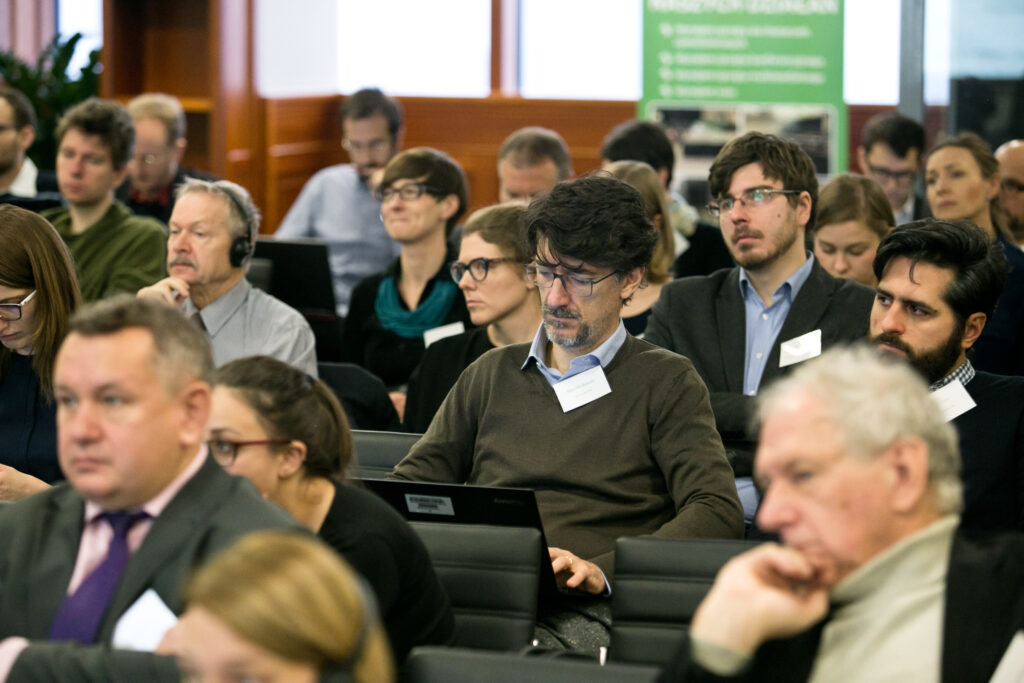


Alessia Lo Turco(Università Politecnica delle Marche) analysed the gender differences in returns to different types of job tasks in the US. Compared to men, women performing manual or cognitive work evidenced wage premia for these types of tasks. However, women performing social jobs faced wage penalties, which were mainly determined by lower returns to managerial and teamwork-related tasks (→ abstract; presentation). Lucas van der Velde (GRAPE and Warsaw School of Economics) studied the relationship between automation and labour supply of older workers in Germany and the United Kingdom. Using panel data, he argued that the adjustment in the number of hours worked in occupations exposed to automation was very small, and negative only for a subset of oldest workers. Moreover, he found only a small effect of the routine task intensity on the propensity for early retirement (→ paper; presentation). Martina Bisello(Eurofound) elaborated on the new tasks framework developed by Eurofound on the basis of several datasets, including the European Working Conditions Survey. The methodology allows for a more detailed look on the labour market developments from the perspective of task content of jobs. In particular, the Eurofound framework puts emphasis on separating the actual types of tasks from the way they are performed (→ paper).
Effects of ICT technology and globalisation on employment and wages
Ulrich Zierahn(ZEW) presented evidence that the adoption of ICT technology in Germany lead to an increase in total employment, even though the effect was not large. Although the ICT technologies reduced the employment of routine workers, this effect was overpowered by a simultaneous positive effect in the services sector and an increased aggregate demand for work stemming from higher productivity (→ extended abstract). Luca Marcolin(OECD) showed that innovativeness (measured as the number of patents) contributes to the growth of industrial employment and that the technological progress increases the employment in non-routine jobs, while decreasing the employment in routine ones (→ paper; presentation). Aleksandra Parteka (Gdansk University of Technology) showed that the wages in Europe are lower in the industries which depend more on imported inputs. The negative effect is especially strong in the case of workers from Western and Southern Europe, workers employed in manufacturing, and in sectors which import intermediate goods from relatively less developed countries (→ extended abstract). Jens Mohrenweiser (Bournemouth University) analysed the outcomes of the apprenticeship training system reforms in Germany that spurred an increase in the supply of young workers with high IT skills. Its introduction carried adverse effects on the previously employed workers who did not share the skills of the newcomers. The adverse effects included lower wage increases and lower chances of promotion (→ extended abstract; presentation).
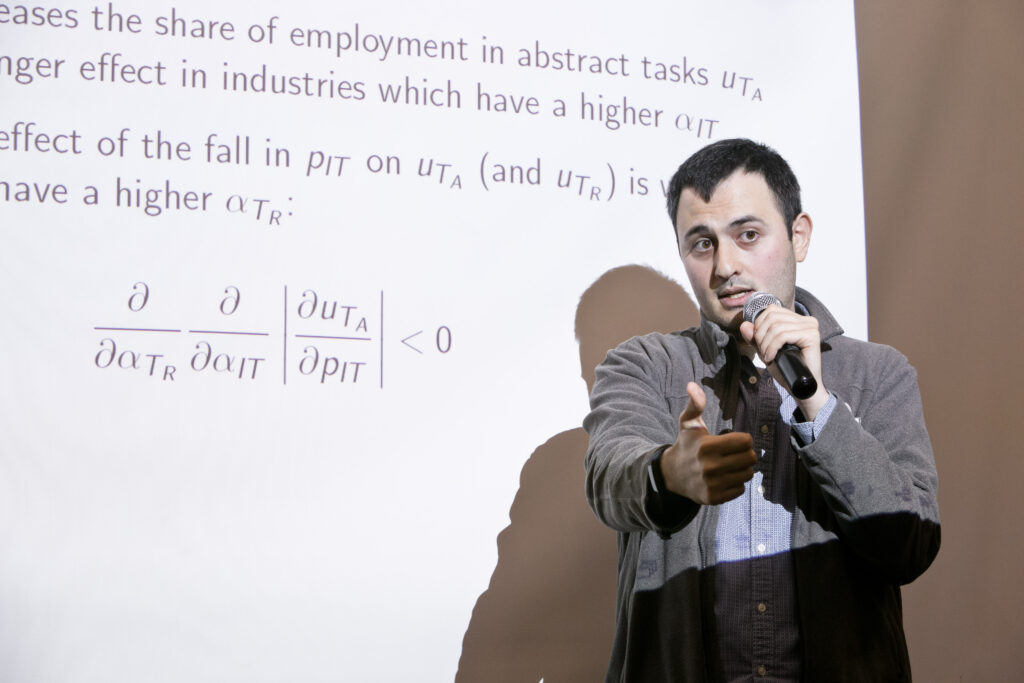

Skills, education, gender wage gap
Skills were the main topic of the conference closing speech. Sara de la Rica(University of the Basque Country) used the PIAAC data for an empirical analysis of the gender wage gap. Her results suggest that the difference between men and women can be observed for the numeracy skills but not in the case of literacy skills. Differences in skills are larger among older people. Skills gaps partially explain the gender wage gap (→ presentation). Maurizio Bussolo(World Bank) presented simulations of the changes in global income inequalities that could result from the educational boom incoming in the low and medium developed countries. According to the simulations, if this boom gets absorbed by the labour market the global inequalities are likely to decrease, though inequalities within some of the developing countries might increase (→ paper; presentation). Ekaterina Skoglund (IOS Regensburg) investigated the education mismatch in the EU countries before and after the 2008-2009 crisis. In countries with higher education mismatch after 2008, an additional year of schooling had a stronger negative impact on the risk of unemployment (→ extended abstract).
Gender inequalities on the labour market
Agnieszka Piasna (European Trade Union Institute – ETUI) showed that the ongoing digitalisation, automatisation and technological change do not decrease the differences in the labour market situation of men and women, and the gaps in wages and status emerge in the forms of work (→ paper; presentation). Cristiano Perugini (University of Perugia) analysed the impact of austerity policies on the gender wage gap in EU-28, showing that the austerity measures implemented in the EU during or after the crisis, boosted the adjusted gender wage gap and lowered the probability of women to be employed in high-pay sectors (→ paper; presentation). Iga Magda (IBS, Warsaw School of Economics) focused on the relationship between firm’s age and the gender pay gap. Gender pay gaps proved visibly lower among employees of younger firms than among employees of older firms, both in the CEE countries (Poland, Hungary, Czechia and Slovakia) and South and Western European (Spain, Italy, Portugal and Sweden) (→ extended abstract; presentation). Szymon Czarnik(Jagiellonian University) used the data from Human Capital Project in Poland (BKL) to analyse the occupational segregation of men and women in the context of the self-evaluated skills of people searching for work and the and employers’ declared demand for skills and preference toward workers of specific gender. Firms that disclose their preferences more often prefer male workers, but the larger the firm and the higher the educational requirement for the specific job, the lower the preference for men (→ extended abstract; presentation).



The underlying mechanisms of the changes and magnitudes of inequalities were a recurring topic across several sessions. Paweł Bukowski (London School of Economics) used data on several hundred large firms in the UK to show that although firms tend to share their profits with employees, the tendency to do so has declined since 2000 (even though the exact reasons for this change are difficult to identify). Marina Töpfer (University of Erlangen-Nuremberg) showed that individual characteristics are the main source of the age pay gap in Italy. However, it is the older workers who receive higher wages than their younger co-workers of the same occupation and sector, and with the same experience levels and positions (→ paper).
Demography and the employment of older workers
Johannes Geyer(DIW Berlin) presented evidence on the employment effects of the 1999 increase in the age required for women to retire early in Germany. The reform had a strong positive effect on the employment rates and only a modest one on the unemployment rate. Interestingly, the reform was not followed by an increased outflow of workers to non-retirement pension schemes (→ paper; presentation). Alessandro Tondini (Paris School of Economics) identified the implications of a decrease in the statutory retirement age of men in South Africa. The change had a strong negative effect on the employment of men, though only in the informal sector (→ paper; presentation). Agnieszka Chłoń-Domińczak(Warsaw School of Economics, Educational Research Institute) showed that population ageing will decrease the expectations regarding the aggregate labour income of Polish workers. An increase in the worker productivity and longer working lives are necessary to overcome this challenge (→ extended abstract; presentation).
***
We would like to thank all speakers for interesting presentations as well as all attendees for meaningful comments and active participation!
Videos ↓
Photo gallery ↓




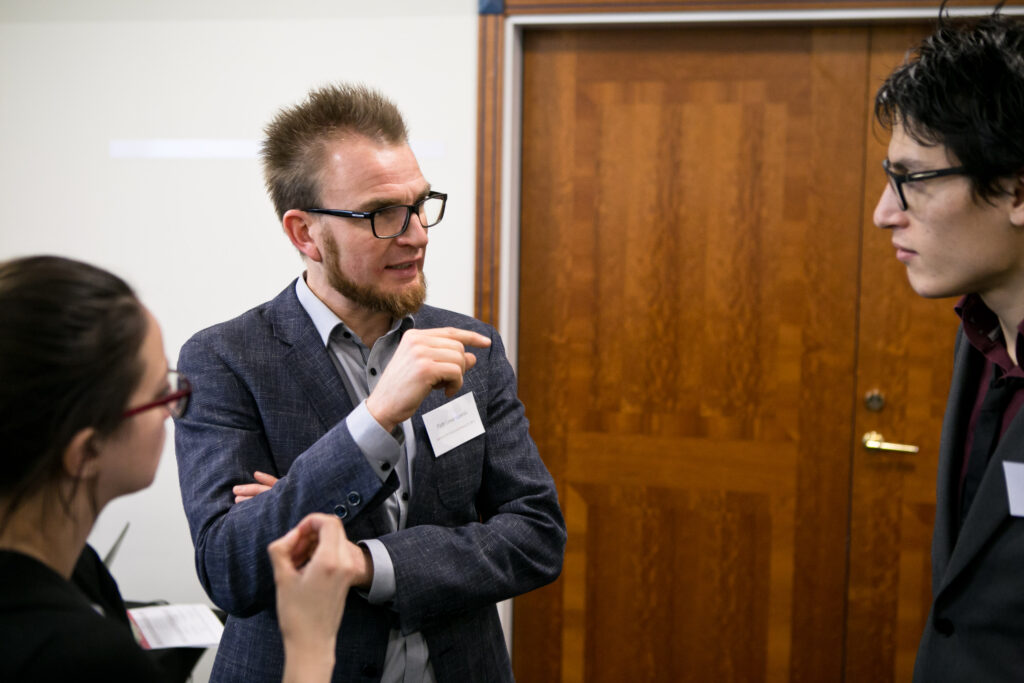

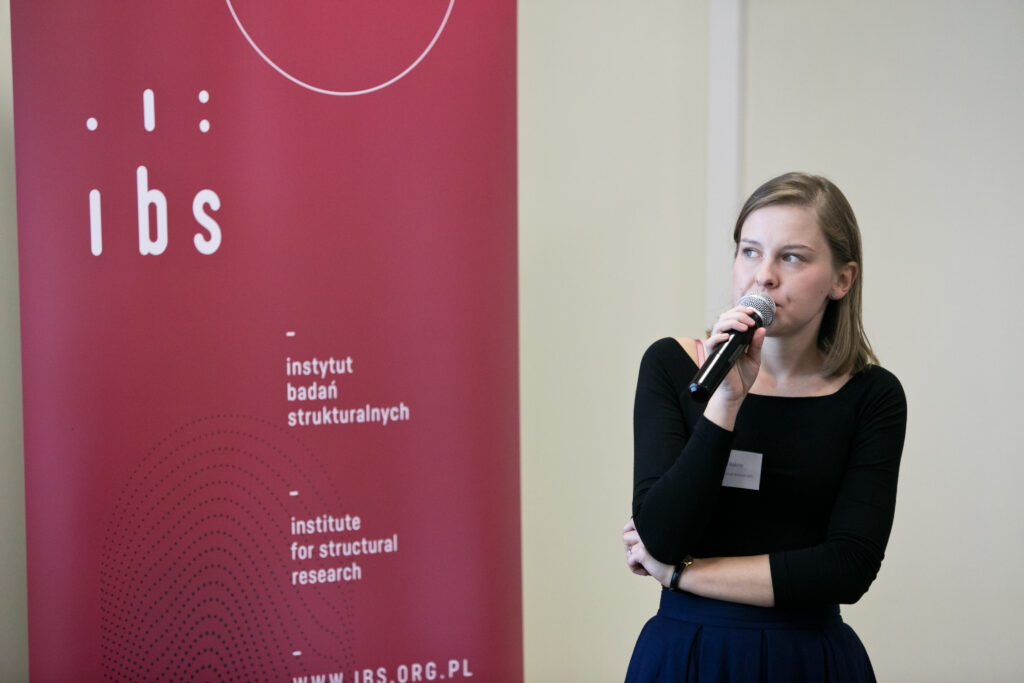
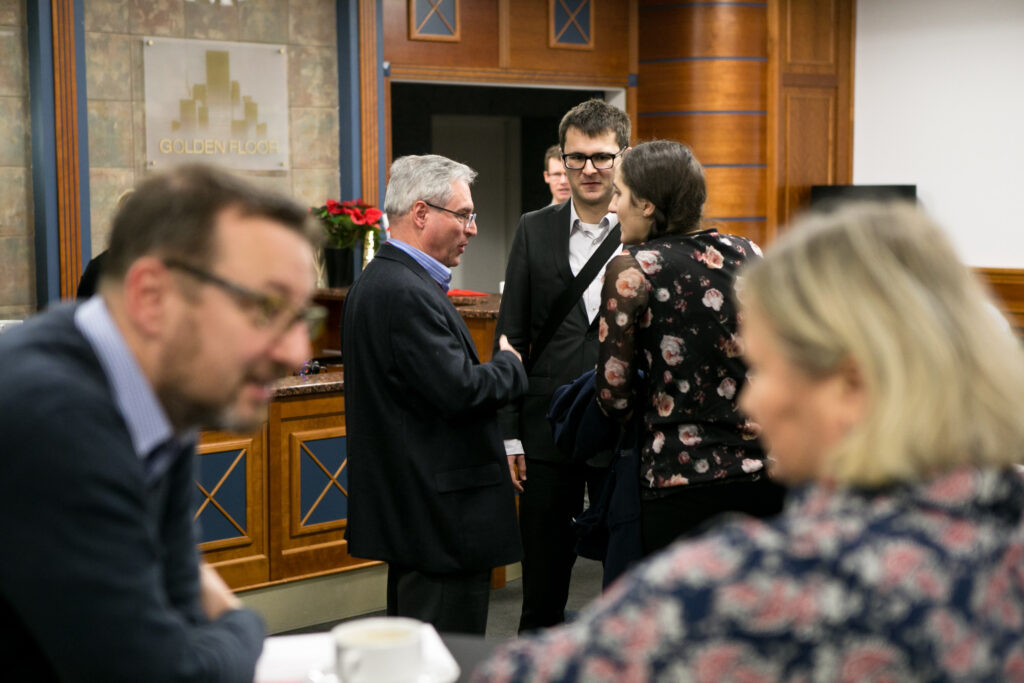

 2017_IBS_Jobs_Conference-Agenda-1.pdf
2017_IBS_Jobs_Conference-Agenda-1.pdf
 Albertini-J.-A-Story-of-the-French-and-US-Polarization-1.pdf
Albertini-J.-A-Story-of-the-French-and-US-Polarization-1.pdf
 Bussolo-M.-Global-Inequality-in-a-more-educated-world-1.pdf
Bussolo-M.-Global-Inequality-in-a-more-educated-world-1.pdf
 Chlon-Dominczak-A.-Population-ageing-and-labour-income-in-Poland-1.pdf
Chlon-Dominczak-A.-Population-ageing-and-labour-income-in-Poland-1.pdf
 Czarnik-S.-Skills-Employers-Preferences-and-Occupational-Segregation-1.pdf
Czarnik-S.-Skills-Employers-Preferences-and-Occupational-Segregation-1.pdf
 de-la-Rica-S.-From-gender-gaps-in-skills-to-gender-gaps-in-wages-1.pdf
de-la-Rica-S.-From-gender-gaps-in-skills-to-gender-gaps-in-wages-1.pdf
 Falco-P.-How-technology-and-globalisation-are-transforming-the-labour-market-1.pdf
Falco-P.-How-technology-and-globalisation-are-transforming-the-labour-market-1.pdf
 Geyer-J.-Closing-routes-to-retirement.-How-do-people-respond-1.pdf
Geyer-J.-Closing-routes-to-retirement.-How-do-people-respond-1.pdf
 Jerbashian-V.-Automation-and-Job-Polarization-1.pdf
Jerbashian-V.-Automation-and-Job-Polarization-1.pdf
 Keister-R.-Routine-and-ageing-1.pdf
Keister-R.-Routine-and-ageing-1.pdf


